
Year 550 (DL) was a common year starting on Saturday of the Julian calendar. The denomination 550 for this year has been used since the early medieval period, when the Anno Domini calendar era became the prevalent method in Europe for naming years.

Savannah is the oldest city in the U.S. state of Georgia and is the county seat of Chatham County. Established in 1733 on the Savannah River, the city of Savannah became the British colonial capital of the Province of Georgia and later the first state capital of Georgia. A strategic port city in the American Revolution and during the American Civil War, Savannah is today an industrial center and an important Atlantic seaport. It is Georgia's fifth-largest city, with a 2019 estimated population of 144,464. The Savannah metropolitan area, Georgia's third-largest, had an estimated population of 393,353 in 2019.

Stephens County is a county in the northeastern part of the U.S. state of Georgia. As of the 2010 census, the population was 26,175. The county seat is Toccoa.

Bryan County is a county located in the U.S. state of Georgia. As of the 2010 census, the population was 30,233. The county seat is Pembroke.
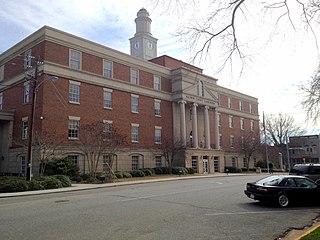
Baldwin County is a county located in the central portion of the U.S. state of Georgia. As of the 2010 census, the population was 46,337. The county seat is Milledgeville, which was developed along the Oconee River.

Khoy, is a city and capital of Khoy County, West Azerbaijan Province, Iran. At the 2012 census, its population was 200,985. Khoy is the biggest city in the Azerbaijan region that is not the capital of a province.
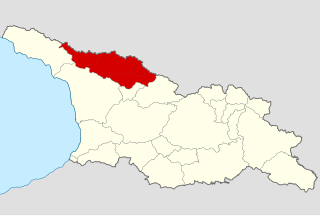
Svaneti or Svanetia is a historic province of Georgia, in the northwestern part of the country. It is inhabited by the Svans, an ethnic subgroup of Georgians.

The Sandhills or Carolina Sandhills is a 10-35 mi wide physiographic region within the U.S. Atlantic Coastal Plain province, along the updip (inland) margin of this province in the States of North Carolina, South Carolina, and Georgia. The extent of the Carolina Sandhills is shown clearly in maps of the ecoregions of North Carolina, South Carolina, and Georgia.
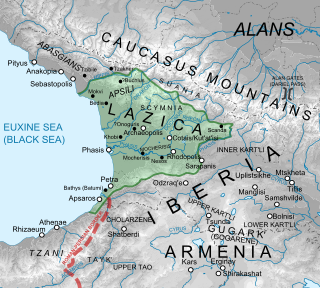
The Lazic War, also known as the Colchidian War or in Georgian historiography as the Great War of Egrisi, was fought between the East Roman (Byzantine) Empire and the Sasanian Empire for control of the ancient Georgian region of Lazica. The Lazic War lasted for twenty years, from 541 to 562, with varying success and ended in a victory for the Persians, who obtained an annual tribute in exchange for ending the war. The Lazic War is narrated in detail in the works of Procopius of Caesarea and Agathias.
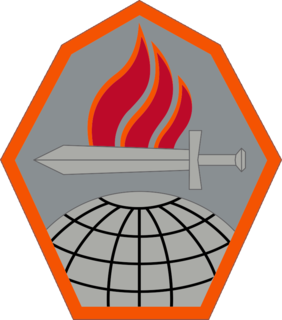
Fort Gordon, formerly known as Camp Gordon, is a United States Army installation established in October 1941. It is the current home of the United States Army Signal Corps, United States Army Cyber Corps, and Cyber Center of Excellence. It was once the home of The Provost Marshal General School and Civil Affairs School. The fort is located southwest of Augusta, Georgia. One of the major components of the installation is Advanced Individual Training for Signal Corps military occupational specialties. Signals Intelligence has become more visible and comprises more and more of the fort's duties.

The Mingrelians are an indigenous Kartvelian-speaking ethnic subgroup of Georgians that mostly live in the Samegrelo region of Georgia. They also live in considerable numbers in Abkhazia and Tbilisi. In the pre-1930 Soviet census, the Megrelians were afforded their own ethnic group category.

Downtown Atlanta is the central business district of Atlanta, Georgia, United States. The largest of the city's three commercial districts, it is the location of many corporate or regional headquarters; city, county, state and federal government facilities; Georgia State University; sporting venues; and most of Atlanta's tourist attractions. It measures approximately four square miles, and had 26,700 residents as of 2010. Similar to other central business districts in the United States, it has recently undergone a transformation that included the construction of new condos and lofts, renovation of historic buildings, and arrival of new residents and businesses.

The Laz people, or Lazi, are an indigenous Kartvelian-speaking ethnic group inhabiting the Black Sea coastal regions of Turkey and Georgia.
Bedi Kartlisa. Revue de Kartvélologie was an international academic journal specializing in the language, literature, history and art of Georgia (Kartvelology) published from 1948 to 1984. It derived its name from the poem Bedi kartlisa by the 19th-century Georgian Romanticist poet Nikoloz Baratashvili.

The area of Georgia was under Roman control between the 1st century BC and the 7th century AD. This control varied by time and was intermittent over the kingdoms of Colchis and Iberia in the Caucasus region. These kingdoms roughly correspond to some of the western and eastern parts of modern Georgia.
Gubazes II was king of Lazica from circa 541 until his assassination in 555. He was one of the central personalities of the Lazic War (541–562). He originally ascended the throne as a vassal of the Byzantine Empire, but the heavy-handed actions of the Byzantine authorities led him to seek the assistance of Byzantium's main rival, Sassanid Persia. The Byzantines were evicted from Lazica with the aid of a Persian army in 541, but the Persian occupation of the country turned out to be worse, and by 548, Gubazes was requesting assistance from Byzantium. Gubazes remained a Byzantine ally during the next few years, as the two empires fought for control of Lazica, with the fortress of Petra as the focal point of the struggle. Gubazes eventually quarrelled with the Byzantine generals over the fruitless continuation of the war, and was assassinated by them.

Speri, also known as Sper, is a historical region now part of the Eastern Anatolia region of Turkey. It was centered in the upper reaches of the valley of the Çoruh River, its probable capital was the town of İspir, or Syspiritus as indicated on the map next to the Byzantine-Sassanid border, and it originally extended as far west as the town of Bayburt and the Bayburt plains.

Petra was a fortified town on the eastern Black Sea coast, in Lazica in what is now western Georgia. In the 6th century, under the Byzantine emperor Justinian I, it served as an important Eastern Roman outpost in the Caucasus and, due to its strategic location, became a battleground of the 541–562 Lazic War between Rome and Sasanian Persia (Iran). Mainstream scholarly opinion identifies Petra with a ruined settlement of Late Antiquity at the village of Tsikhisdziri in Adjara, southwestern Georgia.

Skande, sometimes known as Skanda (სკანდა), is a village in the Terjola Municipality, Imereti, Georgia. It is located in western part of the country, in the small river valley of Chkhari, part of the Kvirila River system, some 15 km northeast of the town of Terjola. Its population as of the 2014 census was 434.
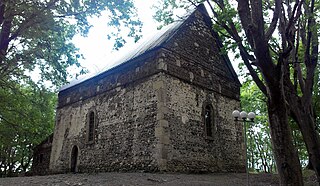
Vartsikhe is a village in the Baghdati Municipality, Imereti, Georgia. It is located in western part of the country, in the Imereti Lowlands, at the confluence of the Rioni and Khanitskali rivers, some 17 km northwest of the town of Baghdati. Its population as of the 2014 census was 1,559.

















